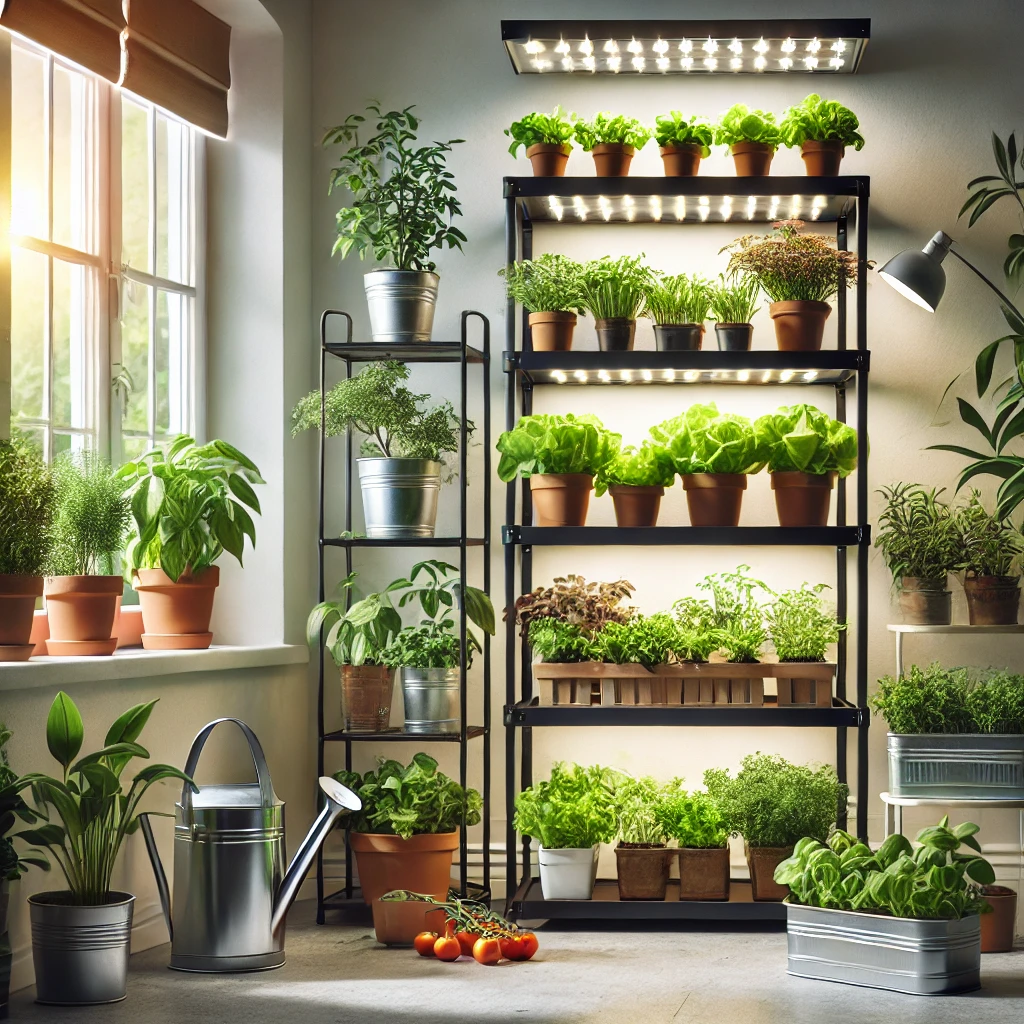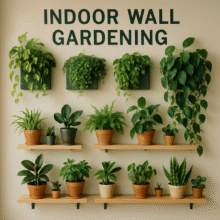Indoor Vegetable Gardening
Indoor vegetable gardening is a fantastic way to enjoy fresh, homegrown produce all year round, even if you don’t have access to an outdoor garden.
Whether you live in a small apartment or want to extend your growing season, creating an indoor garden is easier than you might think.
With the right tools, techniques, and plants, you can harvest delicious vegetables from the comfort of your home.
🌿 Transform Your Entire Outdoor Space
Beyond vegetables – create a complete landscape design Get 7000+ Landscaping Ideas →
*Affiliate link – supports our gardening content
Benefits of Indoor Vegetable Gardening
There are many advantages to growing vegetables indoors:
- Fresh produce all year: Indoor gardens are not limited by weather or season, allowing you to grow vegetables throughout the year.
- Convenience: Having fresh herbs and veggies in your kitchen or living space makes meal preparation convenient.
- Better control: You can control the environment, including lighting, temperature, and humidity, to optimize plant growth.
- Pest management: Growing indoors reduces the risk of pests and plant diseases, keeping your plants healthy and thriving.
Best Vegetables to Grow Indoors
Not all vegetables thrive indoors, but many do well in a controlled environment. Here are some of the best options for indoor gardening:
- Leafy Greens: Spinach, kale, and lettuce overgrow and require minimal space.
- Herbs: Basil, parsley, cilantro, and mint are easy to grow in small pots and can be harvested regularly.
- Tomatoes: Small varieties like cherry or grape tomatoes do well in indoor containers and can produce abundant fruit.
- Peppers: Bell and chili peppers can thrive indoors if given enough light.
- Radishes: These fast-growing vegetables are perfect for small spaces and can be harvested in a few weeks.

Setting Up Your Indoor Vegetable Garden
You’ll need a few basic supplies and the right environment for your plants to flourish.
1. Containers and Soil
Choose containers with good drainage to prevent water pooling at the bottom and causing root rot. Pots between 6 and 12 inches deep are sufficient for most vegetables. Use high-quality potting soil for vegetables to ensure your plants get the necessary nutrients.
2. Lighting
Light is crucial for indoor gardening; most vegetables need 6-8 hours of sunlight daily.
You can use grow lights if you don’t have access to enough natural light. LED grow lights are energy-efficient and provide the full spectrum of light your plants need for photosynthesis.
3. Temperature and Humidity
Most vegetables prefer temperatures between 65°F and 75°F. If your indoor environment is too dry, especially in winter, you might need to increase the humidity. Placing a small humidifier near your plants or misting them regularly can help maintain the right moisture levels.
4. Watering
Indoor plants need less water than outdoor plants because they are not exposed to direct sunlight or wind. Water when the top inch of soil feels dry, and ensure your containers have proper drainage to avoid overwatering.
Tips for a Successful Indoor Vegetable Garden
1. Choose the Right Location
Place your containers near a sunny window or under grow lights. South-facing windows are ideal because they receive the most sunlight.
However, if you don’t have a bright spot, invest in good-quality grow lights.
2. Start with Seeds or Seedlings
You can start your indoor garden with seeds or buy nursery seedlings.
Starting from seeds allows you to grow a wider variety of vegetables, while seedlings can give you a head start.
3. Regular Maintenance
Check your plants daily for signs of pests, wilting, or overwatering.
Remove any dead leaves or stems to encourage healthy growth. Pruning helps keep your plants bushy and productive, especially for herbs like basil and mint.
4. Fertilize Regularly
Indoor plants require regular feeding since they don’t have access to the nutrients naturally found in the soil. Use a liquid fertilizer every two to four weeks, depending on the vegetable.
Choose a balanced fertilizer or one specifically formulated for vegetables.
Challenges of Indoor Gardening and How to Overcome Them
1. Lack of Sunlight
If your home lacks natural light, you must invest in grow lights.
Ensure the lights are positioned close to the plants, as they must mimic the sun’s intensity.
2. Space Constraints
If you’re short on space, vertical gardening can be a solution. Use shelves or hanging planters to maximize your growing area. Compact vegetables, such as dwarf tomatoes or baby greens, are also great space-saving options.
3. Overwatering
Indoor plants are more prone to overwatering since the soil doesn’t dry out as quickly as outdoors. Check the soil’s moisture level before watering and use containers with drainage holes.
Conclusion
Indoor vegetable gardening is a rewarding hobby that brings the joy of fresh, homegrown food to your fingertips, no matter the season or your living situation.
With the right tools, techniques, and care, you can cultivate various vegetables to enhance your meals and provide a sense of accomplishment. Happy gardening!




